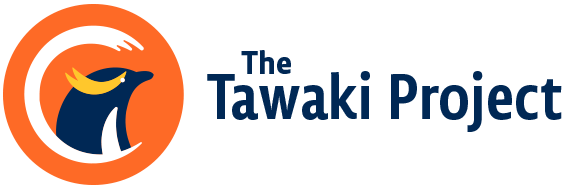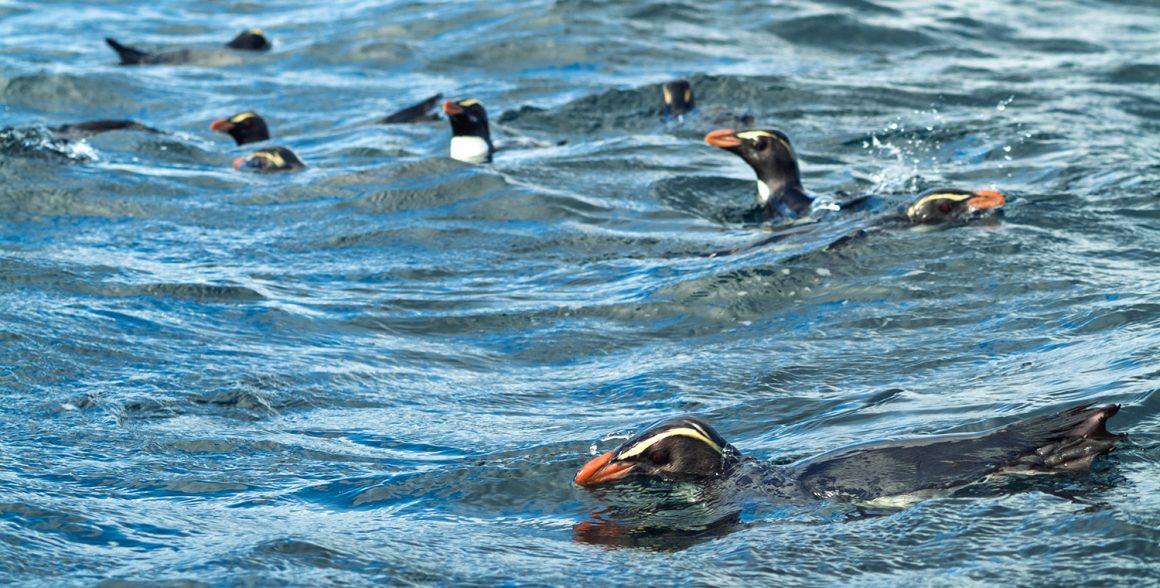Penguins at sea
Unlike all other crested penguin species that live and breed on remote offshore islands in the subantarctic region, Tawaki breed in a continental environment, that is, along the southwestern coastline of Aotearoa/New Zealand. And not only that… although Tawaki only occur along a roughly 400 km stretch of coast (as the crow flies) – from Haretaniwha Point on the West Coast to the South Cape of Rakiura/Stewart Island – the marine habitat they inhabit as oceanic birds could not be more diverse.
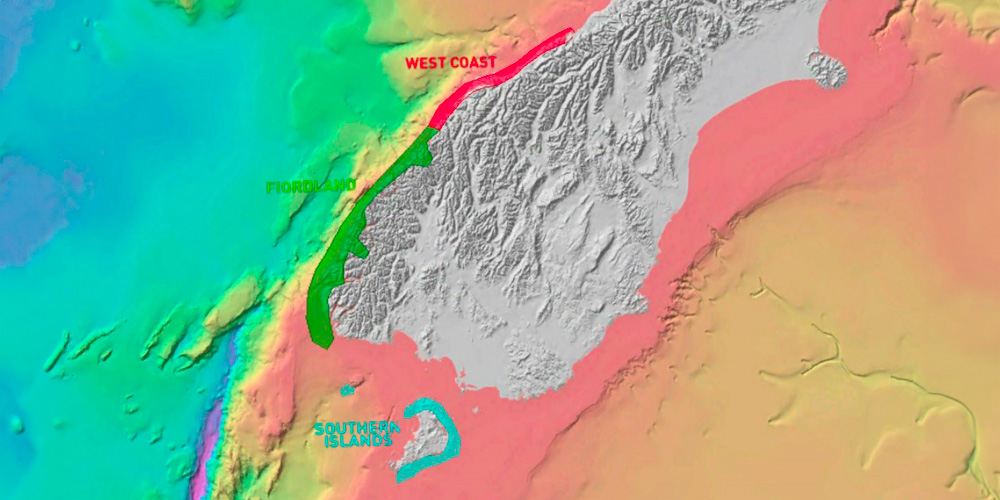
Along the southern West Coast of New Zealand’s South Island, the penguins forage over the continental shelf, in water depths that range between 50-500m. Throughout Fiordland, the penguins have the choice to find food in the intricate fjord systems or forage offshore in deep waters of more than 1000m with no continental shelf to speak of. Finally, around Rakiura/Stewart Island, the penguins only have a very shallow ocean (<40 m) to forage in. No matter which environment, Tawaki seem to cope very well.
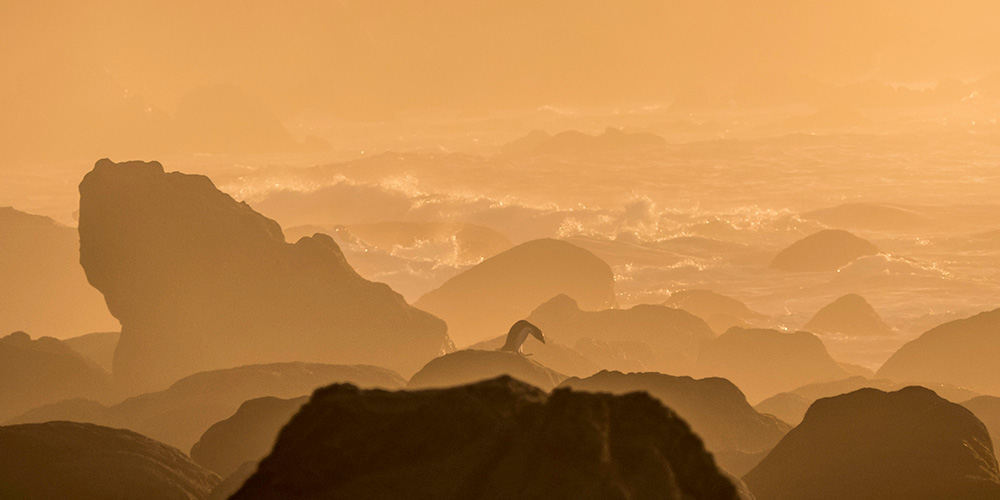
This suggests that the species has the ability to flexibly adjust their foraging strategy to the marine habitat that is available to them. This kind of flexibility suggests that Tawaki might also be able to deal with the environmental changes that ongoing climate change throws at them. As such, Tawaki could help us understand what is troubling other crested penguin species that are in dire straits, such as the endangered Erect-crested penguin.
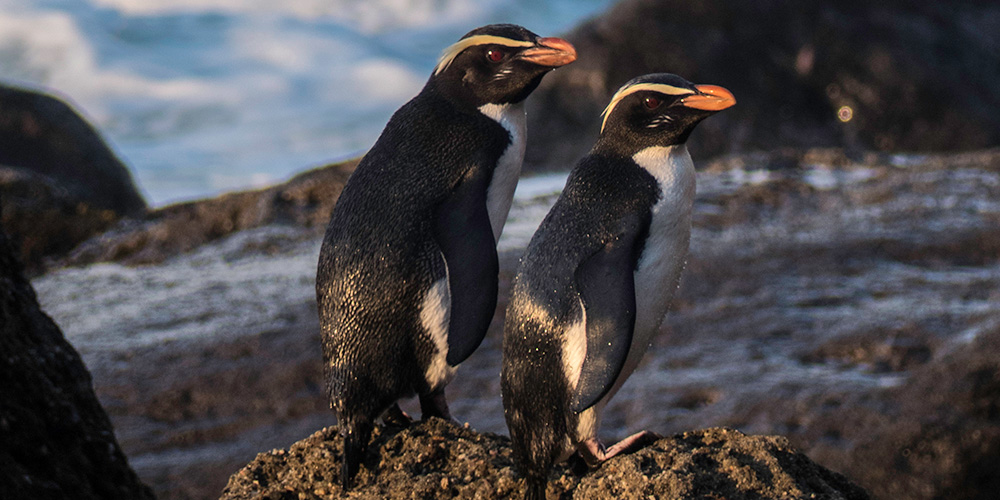
However, Tawaki do have one problem that the other crested penguins do not have to worry about: humans. Compared to the subantarctic region, Tawaki have to deal with inshore fisheries that affect their survival. Tawaki are known to drown in set-nets, a fishing practice that, while banned in many countries, is still used in the commercial inshore fisheries in New Zealand. It is, therefore, vital to understand where Tawaki forage around the mainland and how their foraging grounds overlap with fisheries to mitigate these impacts.
We are using GPS dive loggers to examine where the penguins go during the breeding season. These devices tell us not only where the penguins go, but also how deep and how frequently they dive.
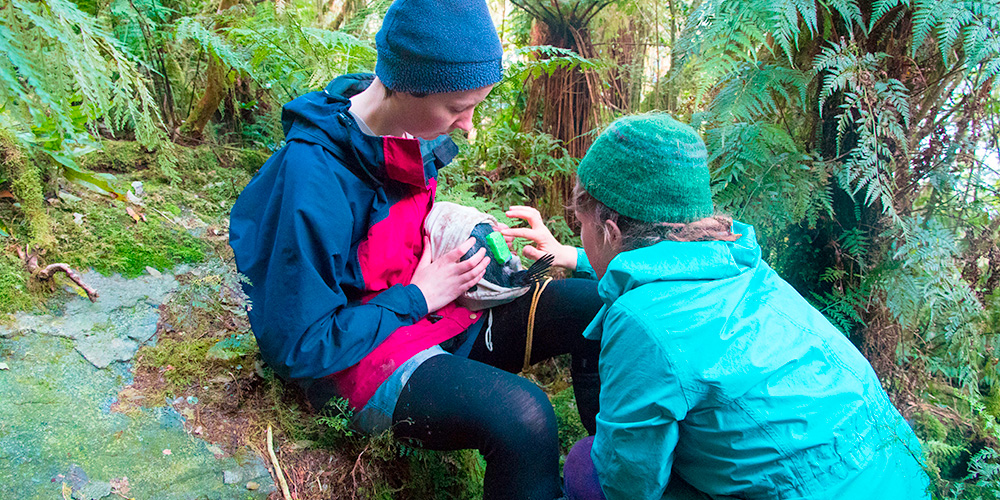
We also deploy novel camera loggers to literally look over the birds’ shoulders to see how they catch their prey, what their prey is, and in what environment they find it. To date, several student projects have emerged from this research with others still ongoing:
- Jeff White (2024, PhD thesis, University of Miami). Characterizing Patterns of Foraging Ecology, Population Structure, and Diving Physiology in Fiordland Penguins/Tawaki and Other Seabirds.
- Blake Hornblow (2022, MSc thesis, University of Otago). Foraging Ecology of Tawaki (Eudyptes pachyrhynchus) in Doubtful Sound, New Zealand.
- Myrene Otis (2021, MSc thesis, University of Otago). Inter-annual and Inter-colony Variation in the Foraging Environments and Behaviour of Tawaki from Milford Sound.
- Jeff White (2021, MSc thesis, Marshall University, USA). Foraging Strategy Plasticity in Fiordland Penguins / Tawaki (Eudyptes pachyrhynchus): A Stable Isotopic Approach.
To find out more about the research we are doing, head over to the Tawaki Project website.



